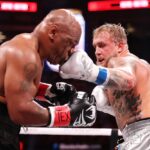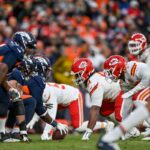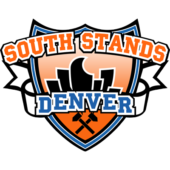Ignorance, religion and sexuality: understanding discrimination in professional sports
“There’s little question that, despite overtures to the contrary, most professional athletes are still uncomfortable with the idea of gay team mates. Ignorance tops the list of reasons. These men have been bred in a hyper-macho subculture since they first picked up a ball, bat or stick.”
Read more
Ignorance, religion and sexuality: understanding discrimination in professional sports
“On this team, with so many different personalities, we just accept people for who they are and we don’t really care too much about a player’s sexuality”
– Terrell Suggs
Over the past decade America has trended toward greater societal tolerance of homosexuality. As a result, a number of US States have begun to recognize civil unions and same-sex marriages. Gays of all races, from every socio-economic cross-section of society can live more openly and love one another in relative peace. It’s been a long time coming for a class of people who have historically encountered discrimination at every turn.
People who are resistant to society’s acceptance of gays are seen in an increasingly unfavorable light by the enlightened citizenry. They’re called “homophobes” and are offered the same distain as racists.
A circle of hatred exists: Those who are uncomfortable with homosexuality are perceived as hating gay people while gays and the people who support their civil rights are equally hateful toward what they see as the petulance of the ignorant.
Within the world of professional sports the process of inclusion has moved at a much slower pace than it has in greater society. Homophobia has remained, to a large degree, the “norm” and is not met with the same scorn in our progressive culture that other intolerances are.
Despite statistical evidence that about four percent of Americans are gay, not a single professional male athlete in any of the big four sports has ever come out of the closet during his playing career. Based on roster sizes, roughly 68 players in the NFL, 60 in the NHL, 51 in Major League Baseball and 18 in the NBA are probably homosexuals. Although doubtful, it’s possible that a variance exists between the percent of gays in pro sports versus other avocations, but chances are that the same numbers apply.
A widely held belief is that sports culture simply is not ready to accept gay players.
The National Football League and the National Basketball Association have both begun to lay the groundwork for the eventual coming out of a player but there’s little indication that locker rooms are ready for it. For every official gesture of acceptance there is an unofficial warning shot from the rank and file making it clear that gays will find life inside the locker room very uncomfortable.
Last week, Fox Sports columnist Jason Whitlock and NFLPA President Domonique Foxworth published articles encouraging the NFL and its players to pave the road to equality. Their sentiments echoed those of several players who have shown support for gay players over the past two NFL seasons.
Interestingly, both Whitlock and Foxworth detailed the moments of their own “conversions” from intolerance to understanding. In doing so they confessed to have once held biases against gays. Their expectations are that all will someday share in their epiphany.
Strangely it’s football, perhaps the “manliest” of the pro sports, that seems nearest to the inclusion of an openly gay player, but how close this is to actually happening is anybody’s guess. And how quickly an individual player coming out of the closet would help to change perceptions among jocks also remains a mystery. Discrimination is unfortunately a time-tested tradition in male professional sports.
Former Major League pitcher Mark Knudson wrote an article last week for Mile High Sports – for which was roundly criticized – where he made the case that an outing of a gay player would be toxic for team chemistry in any sport.
The article, which was courageous in that Knudson took an unpopular tact, stated that “any individual with an agenda that’s even slightly different from that of the team hurts that cause”. The “cause” in this case being what Nuggets head coach George Karl refers to as “teamness”.
Knudson, perhaps ignorantly, made the case that homosexuals would be unable to suppress their attraction to their fellow athletes in the locker room and in the showers: “These are some of the most physically fit and desirable human beings on the planet. The gay athlete isn’t going to notice that? And obviously, the straight teammates are going to feel the same sort of vibe that the attractive girl on the co-ed softball team gets from a few of the men on her team.”
He concluded by stating that ‘it remains the best option for any homosexual athlete in a team sport to keep his orientation private.”
Knudson’s “don’t ask, don’t tell” strategy would preserve the status quo. It also mimics the policy that the US military finally abandoned after being pressured for a decade to do so. Advocates see it as unfair to gays in that is stifles their freedom to be themselves. The military, a public entity, ultimately made a change. Should professional sports teams be expected to do the same?
There’s little question that, despite overtures to the contrary, most professional athletes are still uncomfortable with the idea of gay team mates. Ignorance tops the list of reasons. These men have been bred in a hyper-macho subculture since they first picked up a ball, bat or stick. Locker room tradition involves boasting about the conquest of females, spewing homophobic language (calling each other fags) and a general idea that boys will be boys. The very closeness athletes share is part and parcel to their fear of homosexuality.
There is a specific distaste for homosexuality among African-American men. CNN anchor Don Lemon, who came out as gay in 2011, said in his memoir, ‘Transparent’: “It’s about the worst thing you can be in black culture. You’re taught you have to be a man; you have to be masculine.” Masculinity, or machismo, is highly valued in the black community as an indication of the male sex role.
65% of NFL players are African-American. In the NBA the number is an astounding 83%.
Religion plays a major role in homophobia as well, especially among blacks. According to black gay activist Thomas Romney, “The Black culture is deeply steeped in the tradition of the Church. Representatives of the religious community exert a powerful influence on Blacks and their cry against homosexuality is taken up by the larger sections of the Black community.”
Christianity generally frowns on gayness. Numerous Bible verses make reference to homosexuality and, to a large majority of Christians, gay sex is believed to be sinful. However, the impact of another person’s behavior on the sanctity of another person is dubious. What difference does it make to Jim if John wants to date a man?
Mike Florio of Pro Football Talk on his daily podcast, Pro Football Talk Live said this week: “There are always going to be people who have a skewed view of what religion requires them to do. What we choose to do on life is our own business. I don’t think religion means we go around thumping a Bible telling others ‘how dare you do that’. There are many different views of what religion expects, what it tolerates and what it accepts.”
Despite Mike Florio’s take, and similar sentiments expressed by others in the NFL universe, the role Christianity plays in discrimination is undeniable.
Another barrier to the acceptance of gays is basic revulsion. Some men find the idea of gay male sex unsettling. It’s perceived as “gross” and unclean. If the goal is to have an honest conversation about it, this is a factor in homophobia that cannot be overlooked.
But the cultural debate taking place surrounds gay men in sports, not gay women. Lesbians participate openly in almost all professional sports. They have played tennis, golf and basketball free of discrimination for decades. How and why the two are seen differently is a subject layered with enough complexities to justify an essay of its own. It’s likely, though, that AIDS is part of that equation as the disease dramatically slowed the American gay rights movement in the 1980s.
While AIDS has been brought almost completely under control in the developed world, it is still largely perceived as a risk of being gay. While men like Magic Johnson have proven that the disease is no longer a death sentence for those who acquire it, some athletes remain fearful of the disease. AIDS is a component of anti-gay discrimination in locker rooms as well as in our culture at large, naïve as that thinking may be.
Perhaps it is not fair that gay male athletes still don’t feel safe in expressing their preference openly. It’s not difficult to understand, however, why the process of integrating openly gay athletes into pro sports will take time. Union leaders and individual athletes can begin the conversation, but ultimately acceptance will have to make its way into locker rooms as well as into the bleachers.
Gareth Thomas is a former professional English rugby player who came out of the closet during his playing career. In 2009 Thomas was the only gay athlete competing in major professional sports. He was one of the meanest, toughest players in one of the world’s most brutal sports. His emergence from the closet was received relatively well within the world of rugby. Fans, however, were reluctant to accept him. He told the London Daily Express: “when you play in front of big crowds, it’s not really your teammates that you’re worried about”. He added: “I think people’s perceptions are changing but it is a slow process.”
Gareth Thomas’ story was retold on HBO’s Real Sports with Bryant Gumbell only months after Thomas revealed his sexuality. A major motion picture, rumored to star his close friend Mickey Rourke is forthcoming. Meanwhile, other rugby players have begun to come out of the closet, proving that Thomas’ pioneering courage was not wasted.
For gays to be accepted in American professional sports one athlete will have to play the Gareth Thomas role by being the first to come out of the closet. It will only be the first step, though. Just as the American civil rights movement was a long process (which most people would agree is ongoing), widespread inclusion of openly gay male athletes in the major sports leagues is going to take time.
There must first be an effort made on the part of gay advocates to better understand the objections of the majority of professional athletes, coaches and pro sports fans. While upwards of 60% of Americans now support gay marriage, it’s doubtful that, if free to speak honestly, more than about 25% of career jocks would say that they would welcome a gay team mate.
Luckily, it’s a vocal minority that leads the charge toward equality. Baltimore Ravens linebacker Terrell Suggs said during Super Bowl week “On this team, with so many different personalities, we just accept people for who they are and we don’t really care too much about a player’s sexuality. To each their own. You know who you are, and we accept you for it.” Rob Gronkowski, the popular New England tight end echoed Suggs’ sentiments when queried by Outsports, a gay sports blog: “I mean, we’re teammates so, as long as he’s being a good teammate and being respectful and everything, that’s cool.”
Athlete Ally is a non-profit group dedicated to “encouraging all individuals involved in sports to respect every member of their communities, regardless of perceived or actual sexual orientation, gender identity or gender expression, and to lead others in doing the same”. The group has attracted supporters from a wide spectrum of sports, including Denver Nuggets star Kenneth Faried.
Groups like Athlete Ally can make a difference, but only to a certain degree. Public relations efforts will continue to tilt at windmills until perceptions change deep within professional franchises. U.S. soccer star Megan Rapinoe summed the challenge up nicely in an interview with Out Magazine during which she spoke to the challenges facing gay male athletes.
Rapinoe said: “I feel like sports in general are still homophobic, in the sense that not a lot of people are out.” She added, “In female sports, if you’re gay, most likely your team knows it pretty quickly. It’s very open and widely supported. For males, it’s not that way at all. It’s sad.”
Mark Knudson told the truth in his Mile High Sports column. There’s little doubt that he will catch hell for what he wrote. It’s quite possibly the most read item at the site ever. Rebuttals have already been published by USA Today and by Huffington Post – neither of them were kind to the ex-jock. Still, it’s important to see this issue from all sides in order to understand it. It’s no more reasonable to throw stones at Mark Knudsen as it was for him to make the assertions that he made in the piece.
Many see the issue of gays in professional sports as a simple one, cut and dried. It’s not, though. The realities that surround the topic are complex as a DNA strand.
In a free society it can often be difficult to find consensus and to get people into lock step with one another. That’s the bad news. The good news is that someday there will be equality in pro locker rooms. America is capable of evolving and professional sports leagues are, too.






